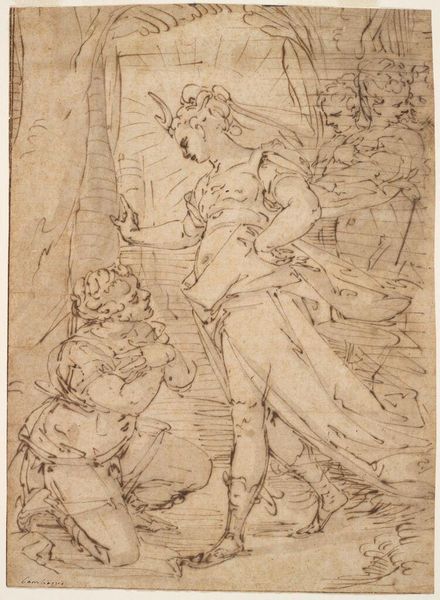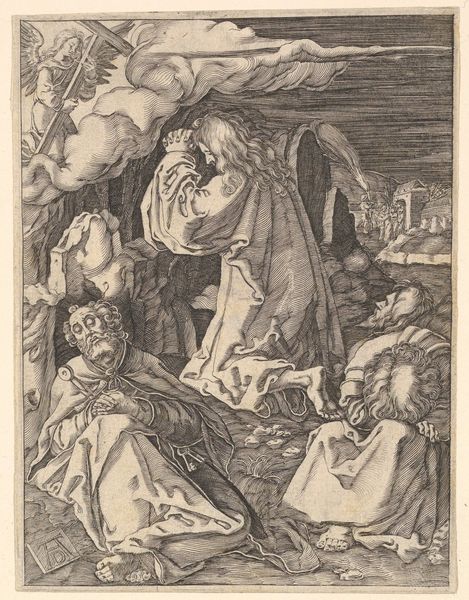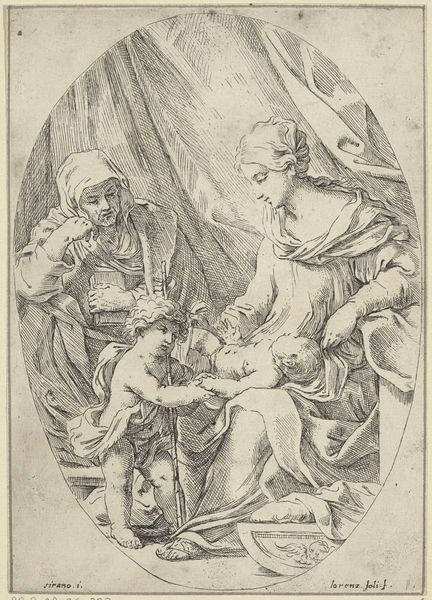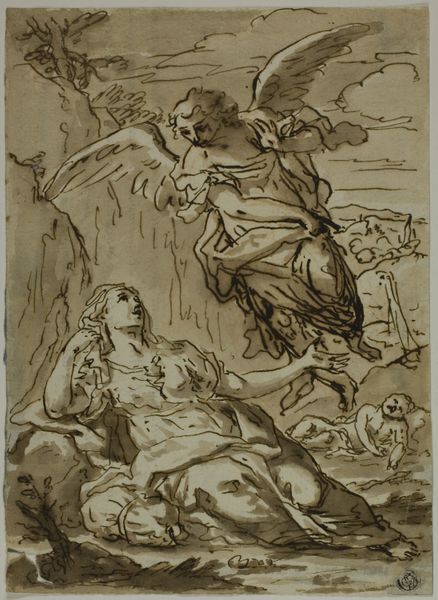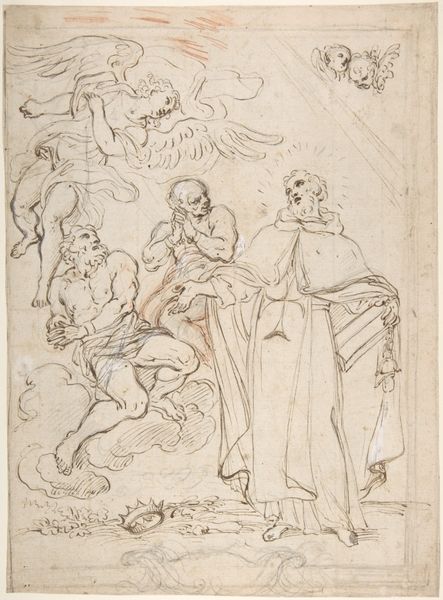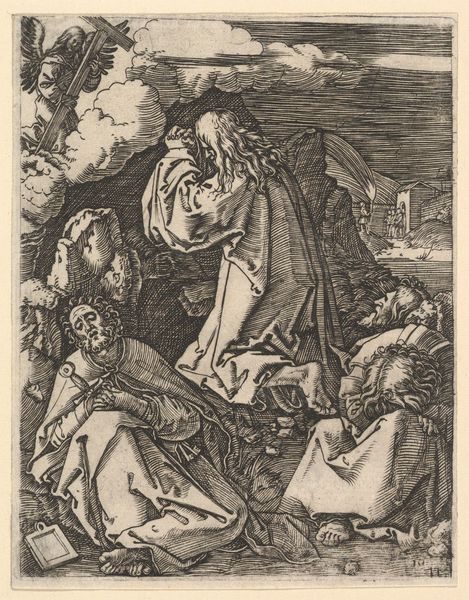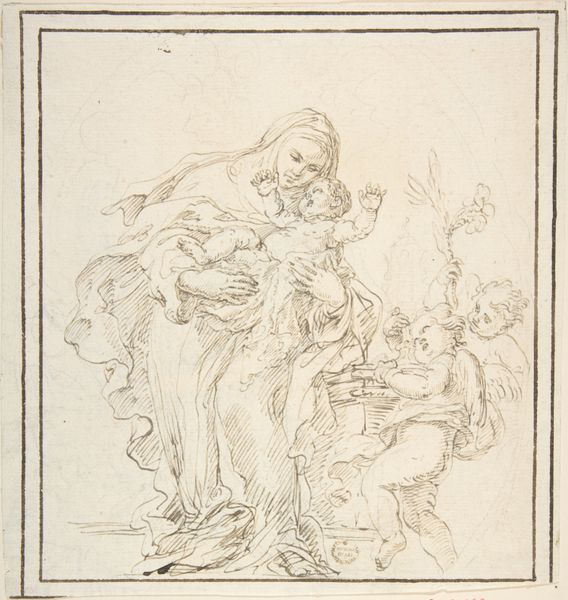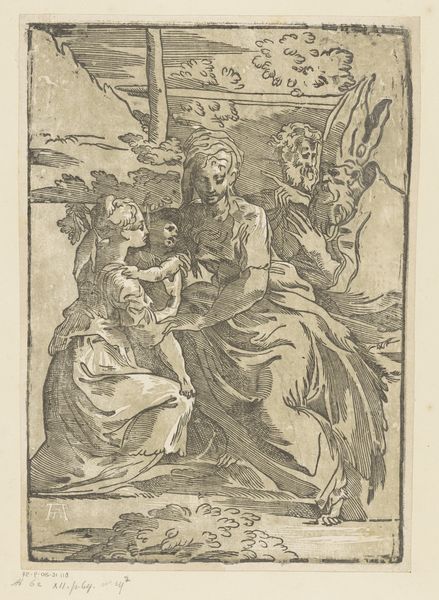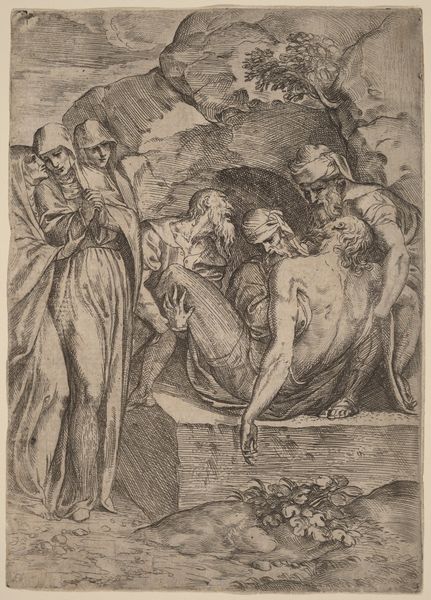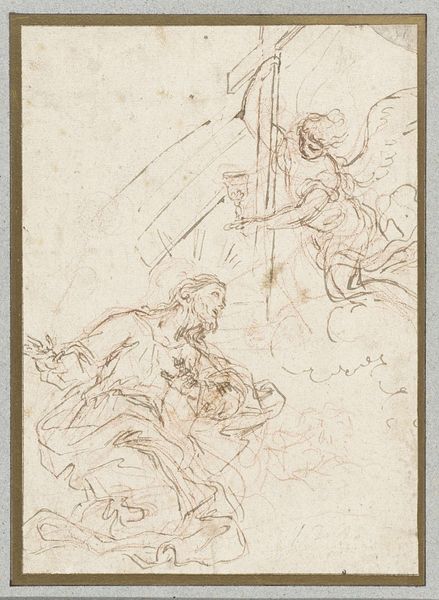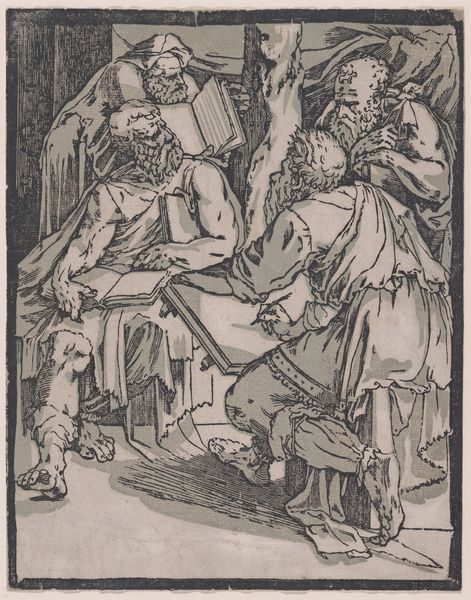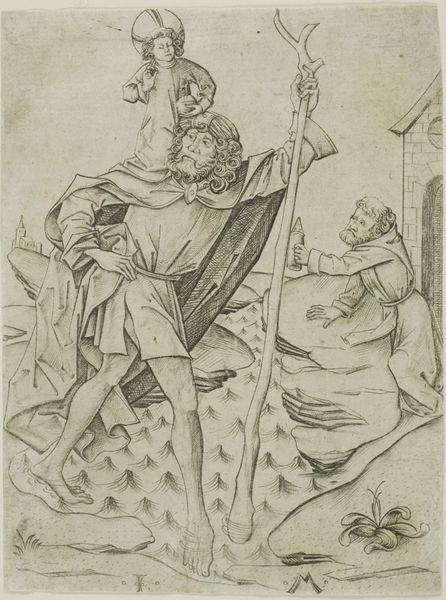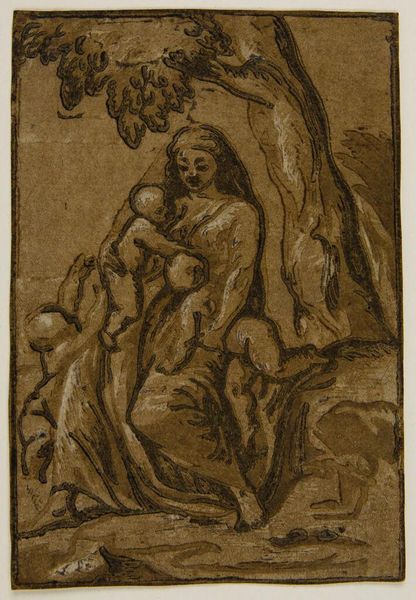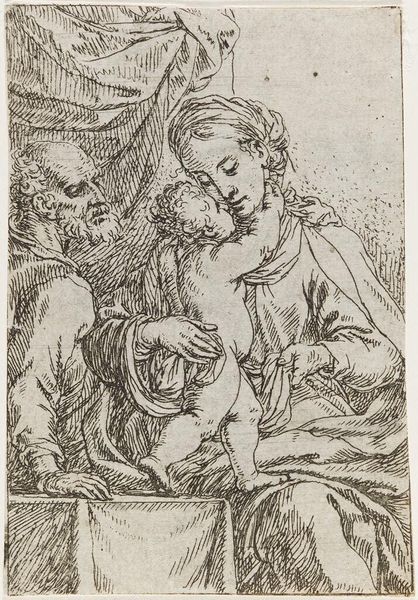
drawing, print, gouache, paper, ink, graphite, pen
#
portrait
#
drawing
#
ink drawing
#
pen drawing
# print
#
gouache
#
figuration
#
paper
#
ink
#
graphite
#
pen
#
genre-painting
Dimensions: 130 × 90 mm
Copyright: Public Domain
Curator: Just look at this tender rendering of the Holy Family! This drawing, delicately executed in pen, ink, graphite, and gouache on paper, is thought to be by Johann Boeckhorst. It’s here at the Art Institute of Chicago, waiting to embrace us with its quiet story. Editor: Quiet is right. I feel a kind of hushed intimacy. It's mostly monochrome, just a gentle dance of lines defining these figures huddled together. It gives the scene this ephemeral quality, like a memory captured. Curator: Indeed! It feels like catching a private moment, doesn't it? What fascinates me is how Boeckhorst, active in the 17th century, used these readily available materials to explore a theme central to the Catholic Counter-Reformation. Depictions of the Holy Family emphasized familial love and offered a model for pious living during that turbulent era. Editor: And you can almost feel the weight of that history just in the sketchiness of the lines. This isn't a grand, declarative statement; it’s a much more personal reflection. See how the lines are feathery and almost hesitant? It makes me wonder what Boeckhorst really thought and felt as he captured their expressions, in particular the face of Saint Joseph. It looks more aged compared to Mary, as though expressing fatigue but also pride. Curator: Exactly! It's as if Boeckhorst is inviting us to witness this private interaction. The composition feels so modern despite its subject matter. The slightly unfocused and sketchy aspects make this very traditional subject fresh again. Editor: It definitely steers clear of overt idealization; even Baby Jesus looks like...well, an actual baby, with that slightly disproportionate head. This almost earthy humanness transforms the hallowed tableau into a scene throbbing with life. How does this sort of image function within the religious and social conventions of the day, I wonder? Curator: That earthiness made this representation widely accessible, promoting devotion by presenting a relatable image. This artwork humanizes its holy subjects, offering a comforting vision to its audience. That’s the power of art, transforming the ethereal to the tangible and touchable! Editor: Absolutely. It shows how visual piety also relies on subtle techniques, a shared social experience made visible by the sensitivity and vision of one talented artist like Boeckhorst. The sacred lives right here, between the ink strokes and the silent gazes. Curator: Right, that makes it an eternal dance across the centuries, wouldn't you agree? Editor: Yes, perfectly said.
Comments
No comments
Be the first to comment and join the conversation on the ultimate creative platform.
